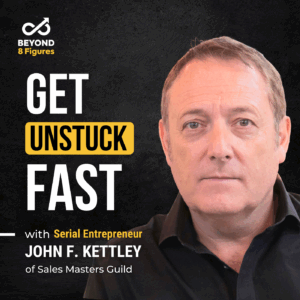
Congratulations – you’ve made it to $1 million in your business! How does it feel? The long hours, sleepless nights, and many learning curves suddenly all feel worth it, right? You’re now ready to reach another milestone – reaching $ 10M!
Reaching $1 million is a fantastic milestone for all new business owners. It means that you have a sustainable business model. And it’s worth a pause to celebrate and take it all in. But, if you’re anything like all the other entrepreneurs, you probably don’t want to stop there.
After celebrating, it’s time to keep the momentum going and continue working towards your next significant milestone – going for $ 10M business! However, this milestone requires you to step it up a few (read: several) notches.
Creating a $ 10M business requires a whole new business strategy that looks entirely different from the one you followed to get to $1 million.
Simply put: what got you to $ 1M won’t get you to $ 10M. There are a few fundamental differences in how you need to approach your business growth to scale to $10 million. You’re going to have to unlearn a lot of what worked to get you to $1 million, including your tools, your team, your business strategy, your priorities, your operations, and your mindset.
I say it all the time; entrepreneurship is a journey. So, here’s how to adapt your approach to business growth to the next level in your ever-evolving journey.
What is the difference between a $ 1M business and a $ 10M business?
Before jumping into how to adapt your business strategy, let’s first briefly touch on the critical differences between a $ 1M business and a $ 10M business, besides the obvious being more cash flow.
A $1 million business is a small business in the US, while a $10 million business is officially a mid-sized business. $10M businesses also come with increased risks, higher stakes, bigger goals, and more employees.
Another key difference is the number of buyers interested in acquiring your business, which will dramatically increase as you reach $ 10M. It’s important to put certain things in place for a possible future exit while scaling your business. Please don’t leave it till the last minute when you decide to exit (like I did)!
Get the right tools
The key to your future growth isn’t about working harder; it’s about finding high-quality digital assets and tools for your team to utilize.
While using more specialized tools is essential, try not to get caught in the loop of using too many tools. Besides subscription or licensing fees, more tools mean more time spent integrating, managing, and reporting from each of these tools.
Regardless of how many tools you use, make sure that each tool ties back to a specific business goal or challenge.
Essential tools that promote business growth include:
CRM tools
CRM stands for Customer Relationship Management. It’s a tool used to manage interactions with customers and potential customers. A CRM helps businesses streamline processes, build customer relationships, increase sales, improve customer service, and increase profitability.
The main goal of using a CRM is to improve business relationships – from relationships with customers to service users, colleagues, partners, and suppliers.
Examples of CRMs include Salesforce, Hubspot, Insightly, Zoho, and ClickUp (I use this one with my team).
Automation tools
In scaling a business, automation should be a central component of nurturing leads and making your and your team’s roles easier. It’s there to help your business save time and resources.
A few ways that you can use automation to promote business growth include:
- Enhance customer experience with automated interactions and streamlined customer support with platforms like LivePerson.
- Make use of auto-reply and personalized, data-driven email marketing with tools like Omnisend.
- Use AI to predict campaign performance with tools like Cortex.
- Integrate social media channels for effective brand awareness with tools like Hootsuite.
- You can automate customer support workflow with your CRM of choice (as mentioned above).
- Automate marketing campaigns for personalized user experience with tools like Oracle Eloqua.
Automation is a powerful technology that can help you scale your business easier by freeing your time to focus on growing your business.
Analytics tools
Data analytics gives you all the vital information required to optimize your business on all fronts. Your data is the backbone on which you grow your business and includes various approaches and solutions.
A few critical areas of your business that you should have data for including your customers, supply chain, finances, workforce, operations, and marketing.
Popular marketing analytics tools include Google Analytics, MixPanel, and SEMRush. Then, there are more business analytics tools like SAS Business Analytics, QlikView, and Splunk.
Build a $10 million-minded team
You may have launched your business out of your home office with nothing but your laptop, some creativity, and the support of a friend or spouse. Along the way, you probably added in a few team members (whether permanent or outsourced), but your team is going to have to grow significantly to reach $ 10M.
A growing team, however, is harder to manage. Slowly, you will have to start delegating more work and reduce the number of employees you have direct contact with. You can no longer give everyone in your team the same level of personalized attention (I know I’ve made this mistake before).
When hiring new team members, focus on hiring talent driven by challenge, curiosity, and excellence rather than those at the lowest cost. I’ve followed this strategy while building my team for both the Beyond 8 Figures podcast and Insights Lab and, so far, the results have been excellent.
Building the strongest possible team isn’t just about hiring the right talent but also about letting go of employees who aren’t the right fit. Evaluate whether everyone that helped you get to $1 million has the potential to get you to $10 million – and if they’re not, then don’t keep them longer than needed. Keeping the wrong people for too long is a significant mistake that many entrepreneurs make.

Why Outsourcing Work Will Help Grow Your Business with Kevin Ashcroft
An adjusted business strategy
In the early stages of building your business, you probably did a lot of ‘winging it.’ Now, as the stakes and risks are higher, you can’t ‘figure it out’ as you go anymore. You need to be sure of what you are doing and have a proper, well-researched business strategy in place.
To start your jump from $1M to $10M, double down on what is already working. Don’t immediately start with entering new markets and customer segments. Instead, use the insights and data you already have and start focusing on the areas you know are working.
Develop a resilient growth marketing framework that relies on the below five fundamental foundations:
- Clarity of mission: set clear short- and long-term goals.
- Strengthen your data capture and reporting process: it’s crucial to know what data you are capturing and how you’re going to use it. Use a combination of customer research, transactional data, and online marketing analytics.
- Improve your insights: ensure that you’re drawing actionable insights from the data that you gather.
- Execution plan: understand how you will use your mission goals, data, and insights to drive business growth.
- Feedback loop: set up a structure that allows you to see the effect (or lack thereof) of your efforts and know if the steps you’ve taken are working in the way you’d hoped. A feedback loop looks like this: Measure relevant data → analyze data → and improve data based on insights gained.
Having these fundamentals in place is vital for growth. Once they’re in place, all you have to do is keep building on them. With the right foundations, you can easily add new team members, develop improved processes, incorporate more tools, and focus on more innovative ideas that will help grow your business.
Be thoughtful of your priorities
You have the same amount of time (if not less) that you can dedicate to your business. But now, you need to choose where to keep your focus carefully. Base your priorities on where you get the highest ROI on your efforts.
Is it directly working with your clients? Is it focusing on your finances? Or is it developing new product lines?
Also, be thoughtful about what you are saying yes to. Consider how you are pacing yourself and what tradeoffs you are making for your time. If you’re going to be successful, it’s not just important to say “Yes” to the right things; it’s essential to say “No” to the wrong things.
I know it’s hard to say no sometimes, but it’s essential if you’re going to really scale your business. And, sometimes, that requires firing clients that don’t align with your business growth strategy.
Align your operations
It’s impossible to work ‘on’ your business while you’re working too much ‘in’ your business. Which is why all operations throughout your business should be streamlined, optimized, and aligned with your business strategy.
When I say aligning your operations, I mean focusing on:
- Your marketing and how you position yourself and your brand.
- Your sales strategy and the processes you follow (e.g., automated sales, sales funnels, sales channels, etc.).
- Where you focus your new business development.
- The systems that you use, from standard operating procedures and minimizing tasks and workload to automating repeatable actions.
Mindset
Your mindset is a fundamental step in scaling a business, and it’s something that’s not spoken about enough in the entrepreneurial community.
But why is it so important?
Well, you know how to get to $1 million. You know the exact steps to take and the processes to follow. But the problem is that they’re all optimized for getting you to $1 million, not $10 million.
Over the years, you’ve developed certain habits, beliefs, truths, and perceptions – all based on your past experiences.
But now, as you’re scaling to $10 million, your actions, beliefs, and decisions need to be different. So, to prepare your mindset for 10x growth, you’ll need to:
- Reevaluate your risk aversion and be honest with yourself about your tolerance for financial risk.
- Determine if your realism is really just a negative outlook on the future or if your optimism is ignoring vital warning signs about the future.
- Decide what you value and why you really want to scale to $10 million.
You’re going to need to realign your mindset with the reality of the risks and rewards that you’ll face throughout this next growth phase. When your mindset is ready, you can tackle everything that comes your way (and there’ll be a lot of it – both rewarding and challenging).
Get the help if you need it
Right now, you’re not a $10 million business owner, so it’s understandable that you might need a bit of help with how to become one.
We help 6-7 figure business owners get more profound, actionable insights to identify the growth opportunities needed to help scale their businesses. If you need some help identifying your growth potential and the actionable insights needed to scale, get in touch with my team at Insights Lab.






 Beyond 8 Figures is hosting an exclusive Business Growth Giveaway designed to ...
Beyond 8 Figures is hosting an exclusive Business Growth Giveaway designed to ...